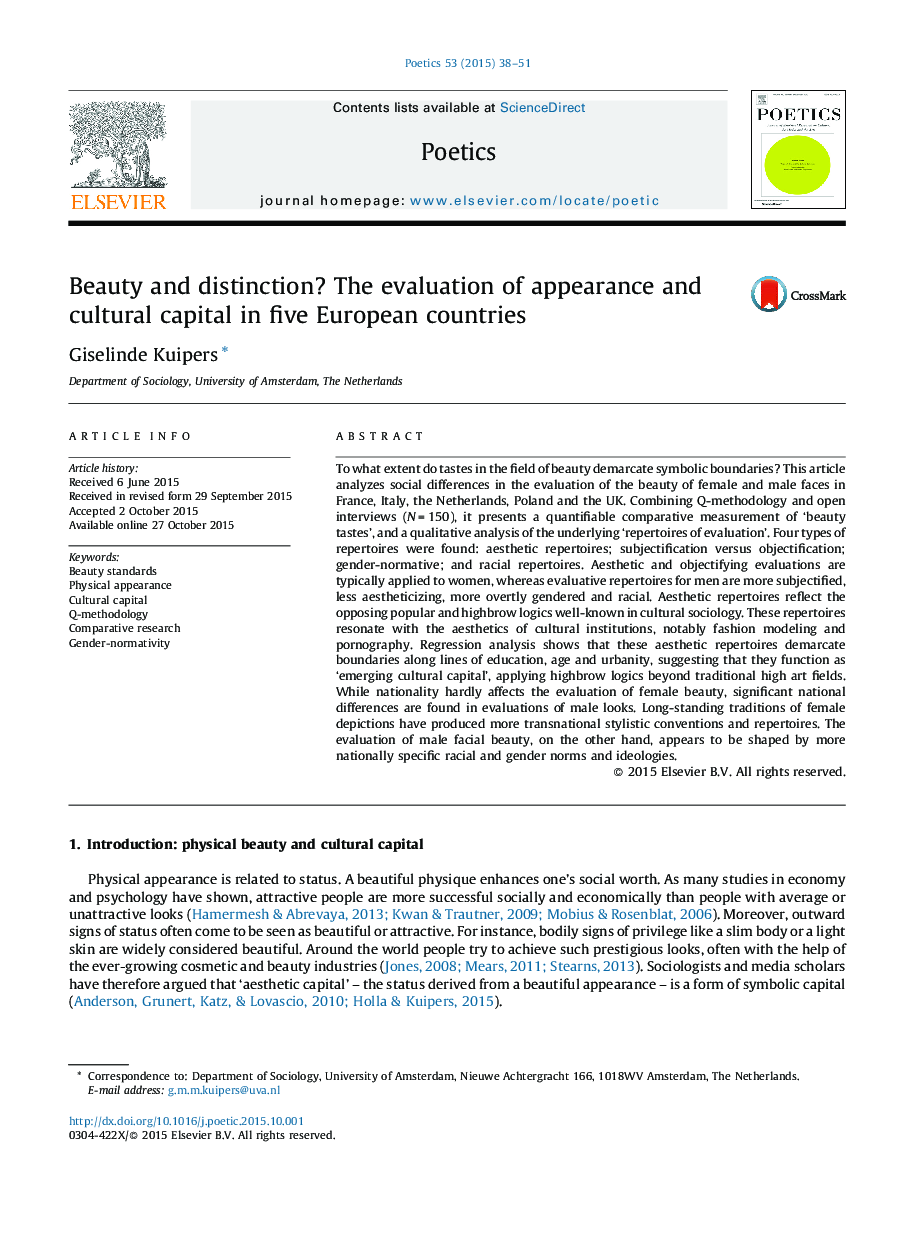| Article ID | Journal | Published Year | Pages | File Type |
|---|---|---|---|---|
| 1128267 | Poetics | 2015 | 14 Pages |
•First study to investigate the appreciation of facial beauty and its relation to social background.•Mixed method design combines interviews, visual Q-methodology and regression in 5 countries.•No single hegemonic beauty standard, but multiple tastes based in several repertoires.•Female beauty standards do not vary across countries, but along lines of (emerging) cultural capital and gender.•Male beauty standards are nationally specific, primarily based in racial and gender ideologies.
To what extent do tastes in the field of beauty demarcate symbolic boundaries? This article analyzes social differences in the evaluation of the beauty of female and male faces in France, Italy, the Netherlands, Poland and the UK. Combining Q-methodology and open interviews (N = 150), it presents a quantifiable comparative measurement of ‘beauty tastes’, and a qualitative analysis of the underlying ‘repertoires of evaluation’. Four types of repertoires were found: aesthetic repertoires; subjectification versus objectification; gender-normative; and racial repertoires. Aesthetic and objectifying evaluations are typically applied to women, whereas evaluative repertoires for men are more subjectified, less aestheticizing, more overtly gendered and racial. Aesthetic repertoires reflect the opposing popular and highbrow logics well-known in cultural sociology. These repertoires resonate with the aesthetics of cultural institutions, notably fashion modeling and pornography. Regression analysis shows that these aesthetic repertoires demarcate boundaries along lines of education, age and urbanity, suggesting that they function as ‘emerging cultural capital’, applying highbrow logics beyond traditional high art fields. While nationality hardly affects the evaluation of female beauty, significant national differences are found in evaluations of male looks. Long-standing traditions of female depictions have produced more transnational stylistic conventions and repertoires. The evaluation of male facial beauty, on the other hand, appears to be shaped by more nationally specific racial and gender norms and ideologies.
